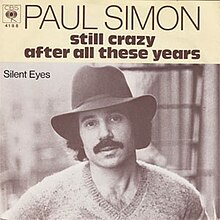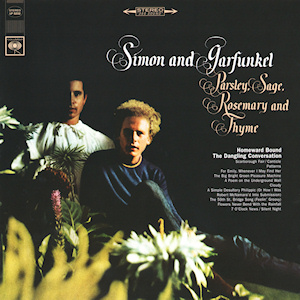
Parsley, Sage, Rosemary and Thyme is the third studio album by American folk rock duo Simon & Garfunkel. Produced by Bob Johnston, the album was released on October 24, 1966, in the United States by Columbia Records. Following the success of the re-release of their debut single "The Sound of Silence", Simon & Garfunkel regrouped after a time apart while Columbia issued their second album, a rushed collection titled Sounds of Silence. For their third album, the duo spent almost three months in the studio working on instrumentation and production.

Bookends is the fourth studio album by American folk rock duo Simon & Garfunkel. Produced by Paul Simon, Art Garfunkel and Roy Halee, the album was released on April 3, 1968, in the United States by Columbia Records. The duo had risen to fame two years prior with the albums Sounds of Silence and Parsley, Sage, Rosemary and Thyme and the soundtrack album for the 1967 film The Graduate.

"The Sound of Silence", originally "The Sounds of Silence", is a song by the American music duo Simon & Garfunkel, written by Paul Simon. The duo's studio audition of the song led to a record deal with Columbia Records, and the original acoustic version was recorded in March 1964 at Columbia Studios in New York City for their debut album, Wednesday Morning, 3 A.M. Released on October 19, 1964, the album was a commercial failure and led to the duo disbanding; Simon returned to England, and Art Garfunkel to his studies at Columbia University.

"Bridge over Troubled Water" is a song by the American folk duo Simon & Garfunkel, released in January 1970 as the second single from their fifth studio album, Bridge over Troubled Water (1970). It was composed by Paul Simon and produced by Simon & Garfunkel and Roy Halee.

"The Boxer" is a song written by Paul Simon and recorded by the American music duo Simon & Garfunkel from their fifth studio album, Bridge over Troubled Water (1970). Produced by the duo and Roy Halee, it was released as a standalone single on March 21, 1969, but included on the album nine months later. The song is a folk rock ballad that variously takes the form of a first-person lament as well as a third-person sketch of a boxer. The lyrics are largely autobiographical and partially inspired by the Bible, and were written during a time when Simon felt he was being unfairly criticized. The song's lyrics discuss poverty and loneliness. It is particularly known for its plaintive refrain, in which they sing 'lie-la-lie', accompanied by a heavily reverbed snare drum.

"I Am a Rock" is a song written by Paul Simon. It was first performed by Simon alone as the opening track on his album The Paul Simon Songbook which he originally recorded and released in August 1965, only in the United Kingdom. Paul Simon and Art Garfunkel, as the American folk rock duo Simon & Garfunkel, re-recorded it on December 14, 1965, and included as the final track on their album Sounds of Silence, which they released on January 17, 1966. It was released as a single in 1966, and subsequently included as the B-side of the 1971 A-side reissue of "The 59th Street Bridge Song ".
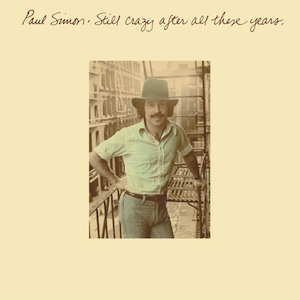
Still Crazy After All These Years is the fourth solo studio album by Paul Simon. Recorded and released in 1975, the album produced four U.S. Top 40 hits: "50 Ways to Leave Your Lover", "Gone at Last", "My Little Town", and the title track. It won two Grammy Awards for Album of the Year and Best Male Pop Vocal Performance in 1976.
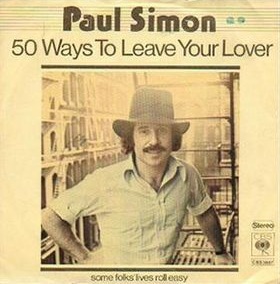
"50 Ways to Leave Your Lover" is a song by the American singer-songwriter Paul Simon. It was the second single from his fourth studio album, Still Crazy After All These Years (1975), released on Columbia Records. Backing vocals on the single were performed by Patti Austin, Valerie Simpson, and Phoebe Snow. The song features a recognizable repeated drum riff performed by drummer Steve Gadd.

"Homeward Bound" is a song by the American music duo Simon & Garfunkel, released as a single on January 19, 1966, by Columbia Records. It was written by Paul Simon and produced by Bob Johnston. Simon wrote the song during his time in England, possibly while waiting for a train at Widnes railway station in the northwest of England.

"Mrs. Robinson" is a song by American music duo Simon & Garfunkel from their fourth studio album, Bookends (1968). Written specifically for the 1967 film The Graduate, the song was released as a single on April 5, 1968, by Columbia Records. Produced by the duo and Roy Halee, the song was written by Paul Simon, who pitched it to movie director Mike Nichols alongside Art Garfunkel after Nichols rejected two other songs intended for the film. The Graduate's soundtrack album uses two short versions of "Mrs. Robinson"; a full version was later included on Bookends. The song was additionally released on the Mrs. Robinson EP in 1968, which also included three other songs from the film: "April Come She Will", "Scarborough Fair/Canticle", and "The Sound of Silence".

"Cecilia" is a song by American musical duo Simon & Garfunkel. It was released in April 1970 as the third single from the group's fifth studio album, Bridge over Troubled Water (1970). Written by Paul Simon, the song's origins lie in a late-night party, in which the duo and friends began banging on a piano bench. They recorded the sound with a tape recorder, employing reverb and matching the rhythm created by the machine. Simon later wrote the song's guitar line and lyrics on the subject of an untrustworthy lover.
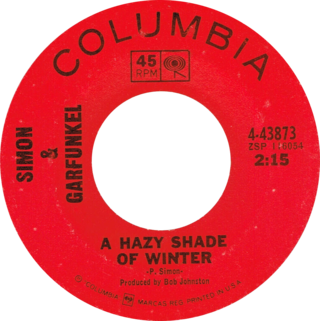
"A Hazy Shade of Winter" is a song by American music duo Simon & Garfunkel, released on October 22, 1966, initially as a stand-alone single, but subsequently included on the duo's fourth studio album, Bookends (1968). It peaked at number 13 on the Billboard Hot 100.

Paul Simon is an American singer-songwriter who is possibly best known as a member of the folk-duo Simon & Garfunkel with Art Garfunkel. He has released studio albums, live albums, compilation albums and singles. His music career has spanned over 50 years. He started recording music in the 1950s and his most recent album, Seven Psalms, was released on May 19, 2023.

"Late in the Evening" is a song by American singer-songwriter Paul Simon. It was the lead single from his fifth studio album, One-Trick Pony (1980), released on Warner Bros. Records.
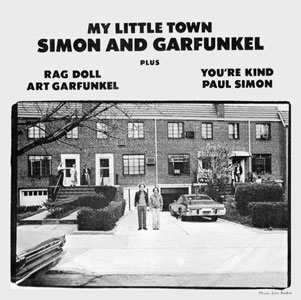
"My Little Town" is a 1975 song by the American duo Simon & Garfunkel. It was written by Paul Simon, who produced the track along with Art Garfunkel and Phil Ramone. The song was included on the 1975 solo releases from both Simon and Garfunkel (Breakaway). It would not appear on any of the duo's albums until the 1997 anthology box set Old Friends and the 1999 compilation album The Best of Simon and Garfunkel. It was the first single release credited to the duo since the 1972 release of "America", released in conjunction with Simon and Garfunkel's Greatest Hits.
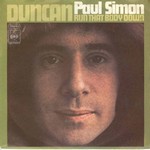
"Duncan" is a song by the American singer-songwriter Paul Simon. It was the third and final single from his second self-titled studio album (1972), released on Columbia Records in July 1972 backed with "Run That Body Down".

"Fakin' It" is a song recorded by American music duo Simon & Garfunkel for their fourth studio album, Bookends (1968). The song was initially released only as a single on July 7, 1967 through Columbia Records. It was later compiled into the second half of Bookends.

"For Emily, Whenever I May Find Her" is a song written by Paul Simon and recorded by American music duo Simon & Garfunkel on their third studio album, Parsley, Sage, Rosemary and Thyme (1966). It is sung solely by Art Garfunkel, and consists mainly of his vocals with heavy reverb and a 12-string acoustic guitar. The lyrics concern finding a lover, although Simon once characterized the subject matter as being about a "belief," rather than about a specific individual.

Bridge Over Troubled Water is the fifth and final studio album by American folk rock duo Simon & Garfunkel, released in January 1970 on Columbia Records. Following the duo's soundtrack for The Graduate, Art Garfunkel took an acting role in the film Catch-22, while Paul Simon worked on the songs, writing all tracks except Felice and Boudleaux Bryant's "Bye Bye Love".

"Gone at Last" is a song by the American singer-songwriter Paul Simon. It was the lead single from his fourth studio album, Still Crazy After All These Years (1975), released on Columbia Records. Phoebe Snow and the Jessy Dixon Singers provide guest vocals, with Snow receiving credit on the single release.
